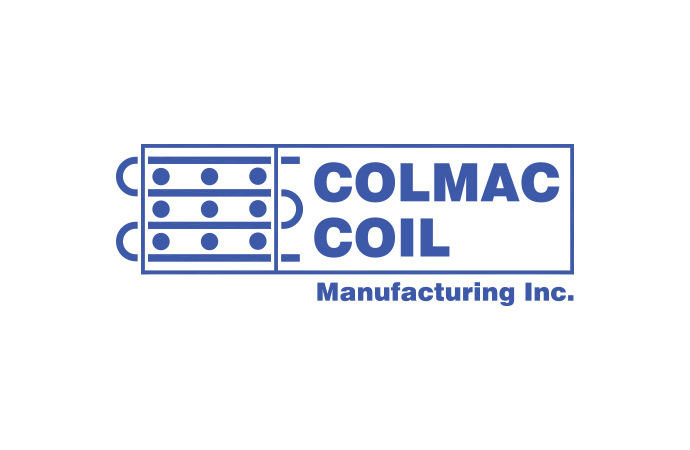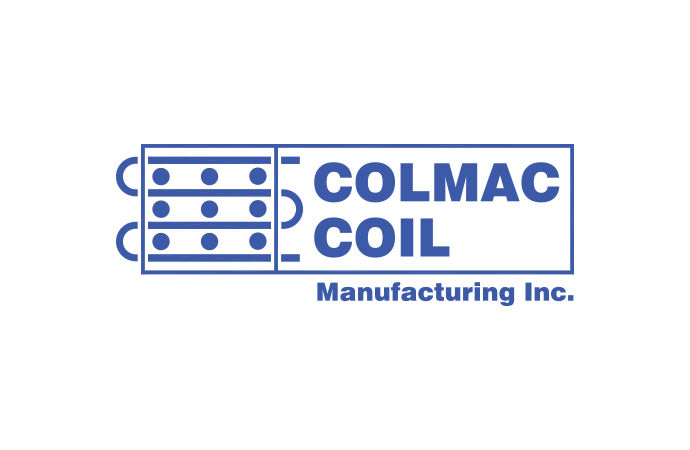The Chicago-area operator invested in a low-charge DX system configured to use less than 10,000 lbs of NH3, for both low and medium temperatures.

Tim Cox, Liberty Cold Storage
When Western Liberty Foods, an Iowa-based meat processor, opened a cold-storage facility in Illinois in 2015, it decided to use a lot less ammonia for refrigeration than it employed at its four processing plants.
Those plants have vast quantities of NH3 in a liquid-overfeed process, including one facility in Illinois that holds 80,000 lbs of the hazardous refrigerant. By contrast, the cold-storage plant it opened, Liberty Cold Storage, located in Bolingbrook, Ill., near Chicago, uses 7,500 lbs to refrigerate West Liberty’s meats and an array of produce, desserts and other third-party foods.
The Liberty Cold Storage plant, which underwent a 123,000-sq-ft expansion completed in early 2018, now encompasses 253,360 sq ft, and its ammonia charge supports a capacity of 928 TR, with a ratio of 8.1 lbs/TR.
This is a much-reduced amount of ammonia and keeps the charge under the 10,000-lb threshold, above which cold storage plants need to abide by strict regulations mandated by the Environmental Protection Agency (risk management plan), the Occupational Health and Safety Administration. (process safety management), and the Department of Homeland Security (chemical facility anti-terrorism standards).
How did Liberty Cold Storage get its charge down?
One of the ways that cold storage operators are reducing their ammonia charge is to install one or more low-charge packaged systems, either on a rooftop or on the ground outside. At the IIAR Natural Refrigeration Conference & Expo, a slew of manufacturers displayed these systems, including Hillphoenix/NXTCOLD, Evapco, Stellar, Zero Zone, Vilter, GEA and Azane.
KPAC General, a South Gate, Calif., cold-storage operator, last year installed eight ultra-low-charge packaged ammonia units from NXTCOLD on the roof of its new plant.
But another approach – the one implemented by Liberty Cold Storage – is to keep the stick-built, central-engine-room format traditionally used by industrial operators, but employ a DX (direct expansion) evaporator from Colmac Coil Manufacturing for both medium-temperature and low-temperature applications.
DX evaporators, which require much less ammonia than an overfeed system, have been used for medium-temperature applications but not for low-temperatures. However, Colmac Coil, based in Colville, Wash., came up with a design (called ADX or Advanced DX) to make them work with low temperatures.
Colmac Coil has installed, since 2014, 47 ADX systems around the world, mostly in the U.S., with several in Australia; this includes 16 new facilities and 31 retrofits and expansions, and in some cases multiple installations at the same facility. Thirty-five more installations are expected this year, said Patty Smith, its marketing department manager.
In addition to Liberty Cold Storage, other users of the Colmac system include Joliet Cold Storage, Preferred Freezer Services, Shepherd’s Processed Eggs, U.S. Cold Storage, Bidvest Australia and Conestoga Cold Storage.
It just seemed like the right fit. We went with their recommendation and it’s worked out well.”
– Tim Cox, Liberty Cold Storage
Tim Cox, vice president at Liberty Cold Storage, who previously spent nine years at parent West Liberty Foods, made the decision to invest in the Colmac Coil ADX evaporators, with direction from his refrigeration contractor, AMS Mechanical Systems, Woodridge, Ill. – in particular, industry veteran Rick Watters, AMS’ VP refrigeration/food process piping who has been with the company almost 35 years. In his spare time, Watters teaches an “Introduction to Ammonia Refrigeration Class” to pipefitters.
Watters designed and installed one of the first ADX installations at another Chicago-area warehouse, Joliet Cold Storage, Joliet, Ill., in 2014 and since then has followed suit at other plants, including Liberty Cold Storage; Cox was given a tour of the Joliet facility. “We try to partner with the right people and let them teach us,” Cox said. “He took us through it with the building contractor [United Insulated Structures]. It just seemed like the right fit. We went with their recommendation and it’s worked out well.”
The number one priority was “less ammonia in the facility,” acknowledged Cox. “Being under the 10,000 pound mark was important to us,” though he still has a PSM program.
The ADX system could have used 800 lbs less ammonia if it didn’t incorporate thermosyphon oil cooling, but the alternative would have been costly, said Watters.
The ADX system primarily reduces the ammonia charge by dint of the patented design of the evaporator. According to Bruce Nelson, president, Colmac Coil, the internal surface of the evaporator tubes has a “wicking structure,” which produces “sufficient capillary pressure to cause liquid ammonia to completely coat the inside of the tubes,” he said. “Otherwise, the liquid falls to the bottom of the pipe, with incomplete wetting.”
Watters likened the grooves inside the tubes to that of a rifle barrel, which enables the ammonia to rotate 360 degrees through the length of a tube like a spinning bullet, enhancing the heat transfer.
The other part of the evaporator system that lowers the charge is a distributor that optimizes flow of ammonia throughout the tubes (circuits). “What the distributor does is it allows each tube to get the same amount of liquid as the others,”
Cox thinks the ADX system “makes more sense in how it delivers ammonia to the evaporator and gets on coils versus a traditional system.”
The technology behind this evaporator is actually not new, but Colmac Coil found a way to harness it differently in the ADX unit to reduce the amount of ammonia needed, noted Watters. According to Nelson, the ADX evaporator decreases the ammonia charge in an overfeed system by 30-50 times.
By reducing the ammonia charge, the ADX system becomes simpler to manage than a traditional system, said Cox. “The engine room seems simpler when you compare the two for me. It sends out the liquid ammonia that the system needs instead of over-pushing it and bringing it back wet. With ADX it all comes back as a gas.”
The ADX system also uses smaller vessels that reduce the amount of ammonia held and eliminate the liquid ammonia pumps used in recirculated systems along with “valving, regulators, reliefs and electrical,” said Watters.
“To me, [the ADX system] is simpler to operate,” said Watters, pointing to the ease of restarting the system after a power failure. “It’s as easy as flipping on a light switch.”
Preventive maintenance is handled by AMS, which monitors the system remotely and visits the plant every other week. “For this system I don’t need someone on site – AMS supports it,” said Cox.
For Watters, the maintenance of the ADX system “is no different than what it is for a conventional ammonia system,” though for technicians not familiar with it, the ADX technology would require some training.
One caveat for the ADX system, noted Watters, is the need to use water-free (anhydrous) ammonia and evacuate the system after servicing “so the system is as dry as possible.”
Safety first
Ammonia, particularly in large quantities, remains a hazardous chemical; last year a leak at an ice rink in British Columbia caused the death of three technicians. Thus, reducing the charge is an important safety consideration for cold storage operators like Liberty Cold Storage.
To enhance the safety of the system, most of the 32 evaporators used at Liberty Cold Storage are housed in penthouse enclosures on the roof of the building, blowing cold air through ducts into the cooling area. (The exception is the dock area and a small cooler, which use hanging evaporators) In this way they resemble low-charge packaged units, except that the latter contain all of the refrigeration equipment, not just the evaporators.
With penthouse evaporators on the roof, “no ammonia is in the room itself,” noted Cox. That means they are out of reach of forklifts that may bump into a hanging evaporator. The penthouse evaporators “are a little more expensive but you see more people going to them, just from a safety standpoint,” he added.
A major leak in the penthouse units could still spill into the refrigerated space through the ducts, but a small leak “would just go up in the air,” said Cox.
In addition to safeguarding employees, the lower ammonia charge helps keep stored products out of harm’s way, which aligned with the overall design of the building. “When we built Liberty Cold Storage, we tried to build with the idea of food safety and food security inside and outside the building,” said Cox. “And give people peace of mind that we have control of the product.”
While Cox wants to reduce the amount of ammonia he uses, and recognizes its potential toxicity, he still appreciates its value as an environmentally friendly natural refrigerant with a GWP of zero. “We did not want a Freon system,” he said. Liberty Cold Storage also prides itself on sending less than 1% or its waste to landfill.
Cost advantage
In terms of cost, Cox saw “an advantage on price” with the ADX system being a little less expensive (in equipment plus installation) than a liquid-overfeed system. According to Nelson, what is helping to drive adoption of the ADX system is its lower cost – 2% to 5% less than that of a traditional overfeed system.
Watters calculated that the Joliet facility’s ADX system cost 2.4% less than a liquid-overfeed system, a savings of $100,000. “We priced it both ways,” he said.
Comparable low-charge packaged ammonia systems are regarded as more expensive than the ADX system – two-to-three times more, said Nelson. Watters agreed that packaged units would be expensive in a new building, but would fit well in an expansion “where you don’t have enough room in your engine room.”
Saving energy was another consideration for Cox. In a presentation at the Global Cold Chain Expo in Chicago last year, Watters, in a presentation with Nelson, provided an energy-usage comparison of the Liberty Cold Storage and Joliet plants with a Chicago-area facility that uses a liquid-overfeed system. In 2015, the Joliet plant used 38% less power (annual average power/sq ft) than the liquid-overfeed facility while Liberty Cold Storage (which does blast freezing in its main freezer) consumed 18% less. (The ADX plants did use VFDs for evaporator fan motors while the overfeed facility did not.)
“We saw the benefits with the cost of energy,” said Cox, adding, “We’re trying to raise the bar by being more efficient with energy and having less ammonia.”
Liberty Cold Storage’s landlord, from whom it is leasing the building, received an energy rebate for the overall efficiency of the building from ComEd, including VFD evaporator-fan drives, floating head pressure on compressors and the refrigeration system as a whole.
Taking a risk?
One concern Cox had about the ADX system was its relative newness (its first installation was in 2014) and the fact that Liberty Cold Storage was one of the larger facilities where ADX has been installed. He perceived the long-term effectiveness of the evaporation units – how they would hold up over time – as a “risk over traditional systems.”
But Watters believes the long-term viability of the ADX system is the same as any recirculated ammonia system. “Ninety-eight percent of it is already known technology that was married together for ammonia,” including enhanced evaporator tubes and optimized distribution through the tubes, he said. The only part that has not been tested over time is the electronics, but that has developed “in leaps and bounds over the last 10 years.”
In effect, what Colmac Coil did was like taking the elements of a Ford Model T and “building a Ferrari,” said Watters, who builds and races drag racing cars on the side.
So far, after some initial tweaking of the controls for the pulse-width thermostatic expansion valves (TXVs) and other typical start-up adjustments, the system has run “great,” said Cox. “I’d do it again if we were to build another cold storage facility.”
Watters sees the low-charge movement as a good direction for the industrial refrigeration industry. “The less ammonia, the better, period,” he said. “There’s always risk, so why not minimize the risk?”
To read the original article in the April issue of Accelerate America, with photography of the facility and complete specs, click here.
Related stories





